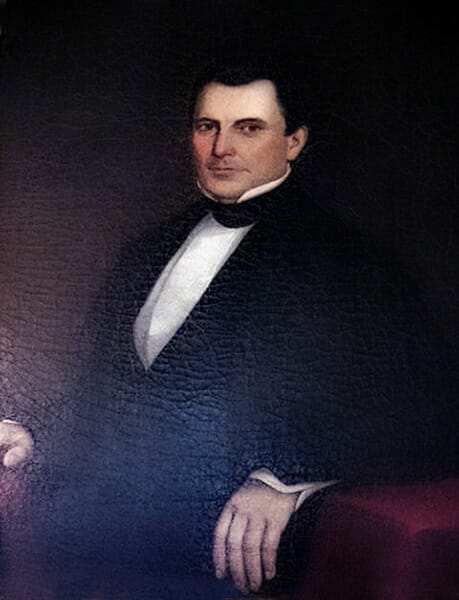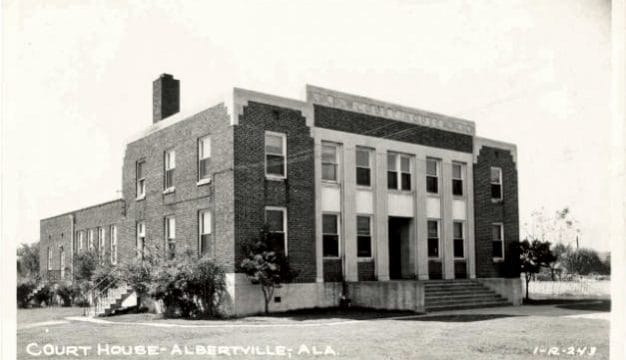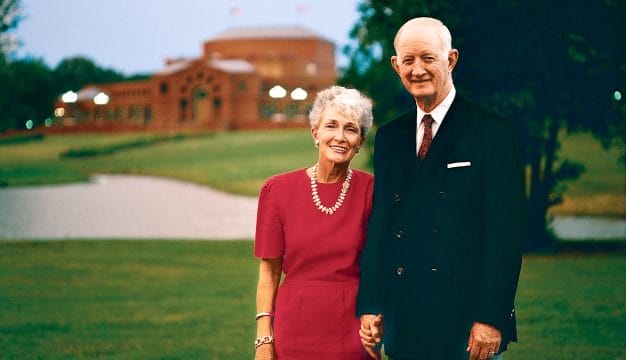Magnolia Grove
Dating from the antebellum era, Magnolia Grove is an historic site and museum located in Greensboro, Hale County. Overseen by the Alabama Historical Commission (AHC) and listed on the National Register of Historic Places, Magnolia Grove is a rare example of the pedimented temple form of Greek Revival architecture in Alabama and was the boyhood home of Richmond Pearson Hobson, a U.S. congressman and hero of the Spanish-American War.
 Magnolia Grove
Magnolia Grove was built around 1840 by Isaac Croom, a native of North Carolina. Croom and his family were a part of the migration of East Coast planters to Alabama’s fertile Black Belt region during the period known as Alabama Fever. Croom was a wealthy cotton planter who had Magnolia Grove built as a townhouse on a 20-acre parcel. He owned two plantations, totaling about 2,000 acres, located approximately 15 miles south of Greensboro as well as other parcels of land in Greene and Marengo counties.
Magnolia Grove
Magnolia Grove was built around 1840 by Isaac Croom, a native of North Carolina. Croom and his family were a part of the migration of East Coast planters to Alabama’s fertile Black Belt region during the period known as Alabama Fever. Croom was a wealthy cotton planter who had Magnolia Grove built as a townhouse on a 20-acre parcel. He owned two plantations, totaling about 2,000 acres, located approximately 15 miles south of Greensboro as well as other parcels of land in Greene and Marengo counties.
In 1863, Croom died from pneumonia; his childless widow, Sarah, continued to live at Magnolia Grove until her death in 1878. A niece, Sallie Pearson Hobson, purchased Magnolia Grove with her husband, James Hobson. The couple had seven children, and their second-oldest son, Richmond, would gain national fame for his actions during the Spanish-American War. He would later earn a Congressional Medal of Honor for the action and was also elected to four terms in Congress, serving from 1907 to 1914.
 Richmond Hobson
In 1934, the house and adjoining buildings were photographed and catalogued by the Library of Congress for its Historic American Building Survey (HABS). After Richmond’s death in 1937, his youngest sister, Margaret, led an effort to have Magnolia Grove preserved as a memorial to her brother. The Hobson family deeded Magnolia Grove to the state of Alabama in 1943 for that purpose but retained a lifetime tenancy. The house was listed on the National Register of Historic Places in 1973. Margaret Hobson was the last member of the Hobson family to live at Magnolia Grove until her death in 1978. The state transferred the property to the Alabama Historical Commission on April 5, 1980.
Richmond Hobson
In 1934, the house and adjoining buildings were photographed and catalogued by the Library of Congress for its Historic American Building Survey (HABS). After Richmond’s death in 1937, his youngest sister, Margaret, led an effort to have Magnolia Grove preserved as a memorial to her brother. The Hobson family deeded Magnolia Grove to the state of Alabama in 1943 for that purpose but retained a lifetime tenancy. The house was listed on the National Register of Historic Places in 1973. Margaret Hobson was the last member of the Hobson family to live at Magnolia Grove until her death in 1978. The state transferred the property to the Alabama Historical Commission on April 5, 1980.
The main house at Magnolia Grove is an example of the pedimented temple form of the Greek Revival style of architecture. The pediment, the triangular structure over the front portico, is supported by six Tuscan Doric columns. The two-story house, built of brick with a stucco front façade on the front, has a central hall with two rooms on each side on both the first and second floors. The stair is a self-supporting spiral. According to family records, John Drish, a physician, architect, and early founder of Tuscaloosa, was the designer and oversaw construction. Some of the design features are similar to the work of architect William Nichols, who was active in Tuscaloosa in the 1820s and early 1830s. Indeed, Nichols’s son married one of Sarah Croom’s nieces.
The site retains much of its original context, sitting on 15 acres. In addition to the main house, the original kitchen, a detached two-story structure, still stands behind the main house. The basement level consists of a root cellar, wine cellar, and what was possibly a laundry. The upper level has two rooms; the cooking area and cook’s living quarters. Another outbuilding, a one-room frame structure located at the south end of the rear porch of the main house, is believed to have been the original plantation office, but it was repurposed in the 1870s to serve as the kitchen. A one-room frame slave cabin stands at the southwest corner of the property. There was one other slave house that was demolished prior to the 1930s, as were a barn, bath house, and privy. A small four-column brick structure described in the HABS as “slave quarters” was in fact the original kitchen. As this was a townhouse, the number of slaves living here would have been few, probably no more than 12 and consisting of domestics, gardeners, and a carriage driver, for example.
 Isaac Croom
Magnolia Grove underwent minor modifications in the late nineteenth and early twentieth centuries in the form of additions to the exterior, such as the enclosure of part of the back porch to add space for a bathroom; the interior remains intact from the original construction. It is furnished much as it was when Margaret Hobson died in 1978. The museum collection consists of furnishings belonging to the Croom and Hobson families, as well as a number of artifacts relating to Richmond Pearson Hobson’s naval and congressional careers. Among the important objects in the collection are a silver cup presented to Hobson in 1900 by the people of Alabama, the name board from the USS Merrimac (the ship he scuttled in Santiago Harbor to block Spanish ships), and a piece of whole-cloth quilt made in 1682 by Sarah Knight of Connecticut.
Isaac Croom
Magnolia Grove underwent minor modifications in the late nineteenth and early twentieth centuries in the form of additions to the exterior, such as the enclosure of part of the back porch to add space for a bathroom; the interior remains intact from the original construction. It is furnished much as it was when Margaret Hobson died in 1978. The museum collection consists of furnishings belonging to the Croom and Hobson families, as well as a number of artifacts relating to Richmond Pearson Hobson’s naval and congressional careers. Among the important objects in the collection are a silver cup presented to Hobson in 1900 by the people of Alabama, the name board from the USS Merrimac (the ship he scuttled in Santiago Harbor to block Spanish ships), and a piece of whole-cloth quilt made in 1682 by Sarah Knight of Connecticut.
Magnolia Grove is located at 1002 Hobson Street in Greensboro. The grounds are open year round, except state holidays, and a cell phone audio tour is available. Magnolia Grove attracts approximately 2,000 visitors annually. There is a full time staff of two, supplemented by five volunteers. The site hosts the Magnolia Grove Christmas Open House on the second Sunday in December, as well as other programming throughout the year.
Further Reading
- Rahe, Lee W. “Black Belt Elegance: Late Antebellum Alabama Parlors.” Alabama Heritage 43 (Winter 1997): 34-44.
- Rosenfeld, Harvey. Richmond Pearson Hobson, Naval Hero from Magnolia Grove. Las Cruces, N.M.: Yucca Tree Press, 2001.



